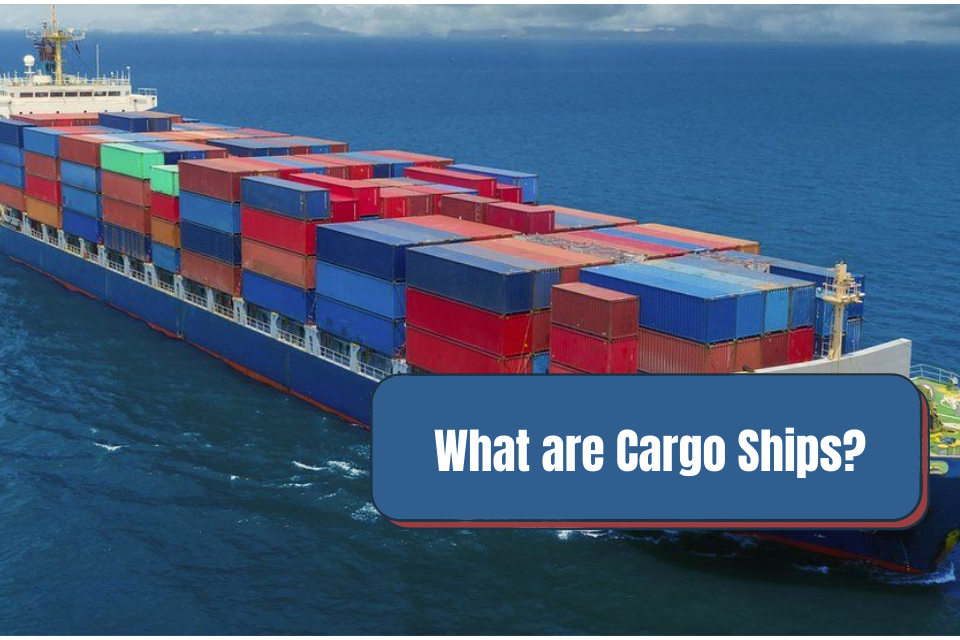Shipping plays a significant role in world trade and has a crucial influence on the world economy. Cargo shipping is the most common type of transportation in international trade. It is one of the most efficient yet cost-effective ways to deliver goods on time, safely, and at an affordable cost.
What are cargo ships?
A cargo ship is generally known as any merchant ship or vessel that transmits massive goods and commodities from one harbor to another. Cargo ships are usually designed and built specifically for this purpose, equipped with cranes and other mechanisms for loading and unloading, and they range in size from small to large. Each year thousands of cargo carriers transport goods across the world’s seas and oceans, exporting most of the world’s goods and services.
A cargo ship is designed with welded steel, and they typically last 25 to 30 years before being demolished. However, cargo Shipments are still considered the best way of handling business goods and transferring trade goods today. It is relatively popular for managing delicate materials due to its safety and low cost.
Different types of cargo ships
In the case of sea freight cargo ships, different modes of transport are available depending on the cargoes involved.
1. Container ships
Container ships are the most common ships used for transporting non-bulk cargoes at sea. Container vessels (ships) are vessels constructed to hold cargo packed into containers of various kinds. Container ships are one of the most potent methods of transporting goods. These ships have made it possible to transport massive cargo at once, effectively changing global trade.
Due to their popularity in international trade, container ships are generally highly automated, and newer models emit zero emissions.
2. General cargo ships
A general cargo ship is specialized for carrying loose packaged cargo of all kinds. There are various kinds of general cargo ships, each having its hold or
decks. Food, clothing, footwear, chemicals, machinery, furniture, and motor vehicles are mainly transported on general cargo vessels. It’s also known as a multi-purpose vessel because of the diversity of loads it can handle and its flexibility.
3. RO-RO vessels
Shipping vessels designed for transporting wheeled cargo aboard, such as cars, trucks, semi-trailers, and buses, are known as roll-on/roll-off (RORO) ships. These ships transport wheeled cargo that is stuffed on its own wheels or with the assistance of a platform vehicle. There is usually a series of decks connected by ramps or elevators and doors positioned at the knot or stern of the ship.
4. Reefer ships
Reefer ships are containerships that exclusively carry refrigerated containers. Before the advent of reefer containers, reefer ships were a significant means of transporting goods under controlled conditions. Unlike conventional container ships, reefer ships have a bigger size, different design, power generation, and distribution equipment.
5. Breakbulk ships
Breakbulk ships are possibly the oldest kind of cargo-carrying vessel still in use at sea. Shipping breakbulk by the ocean has become a common method of importing and exporting goods that do not fit in standard-sized shipping containers or cargo bins. The most common breakbulk cargos include steel girders, structural steel, oversized or heavy goods, construction equipment, machinery, and vehicles.
6. Bulk carriers
Bulk carriers are the best choice for moving solid bulk loads. It is efficient for carrying small or loose crush units, including cement, grains, and minerals. They use spoon-shaped cranes for loading and unloading, and we can see that there are well-defined areas on their decks for this purpose.
7. Oil tankers
Oil tankers are specially designed tank ships that transport crude oil. Ships that transport oil differs in technical characteristics from cargo ships that transport goods, such as the tight seal against oil leaks, the structure’s resistance, and the pumping system designed for this. These massive ships have to berth on the open seas because they are so large.
8. Gas carriers
A gas carrier ship is a kind of freight-carrier ship that is designed to transport all types of liquefied gases to their final locations.
How many containers fit on a cargo ship?
However, many people still use containers for storage and transportation despite their great use as construction materials. Shipments of goods by cargo have been used internationally for decades and remain the most popular means of transferring goods from one country to another. It is advantageous since it allows large amounts of cargo to be moved without causing any disruptions or logistical problems.
Every day, freight liners transport thousands of units safely and securely with fewer than twenty personnel. There are different sizes of container ships, and most hold anywhere from 10,000 TEU to 21,000 TEU of cargo. Cargo ships are generally divided into two sizes: the 20ft (also known as a TEU) and the 40ft (also called an FEU).
Considering that containers are measured in TEUs, TEU capacity is the number of containers that can be placed on the deck or below the deck of a vessel. The maximum number of units that can fit on a freight liner will naturally vary depending on the size of the unit. Nowadays, the biggest freight liner can transport more than 21,000 TEUs.
Each 20ft unit measures about 20ft by 8ft by 8ft, and it has a total volume of about 1360ft3. By multiplying the volume of these containers by the number of TEU containers the boat can carry, the boat can hold a total of 29,121,680ft3.



